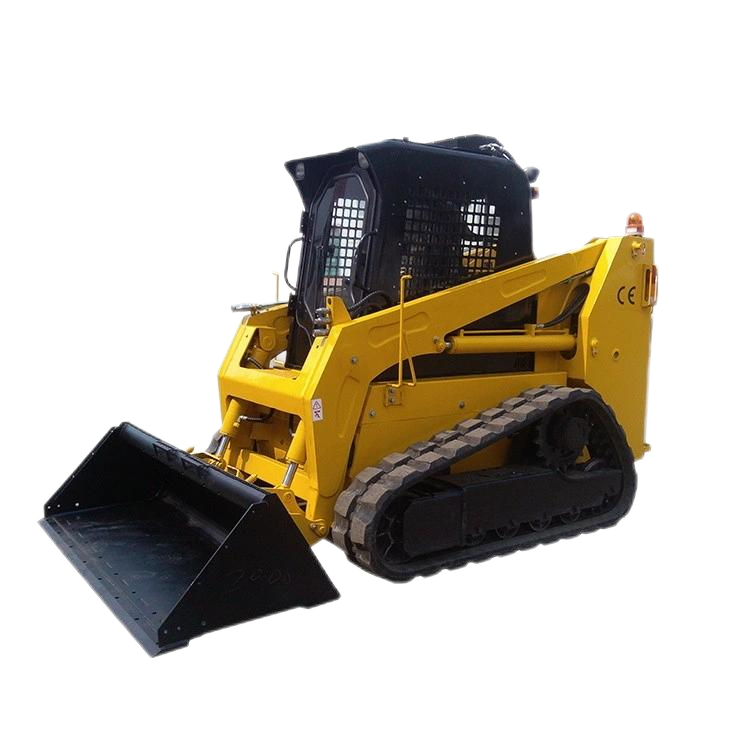In the large family of construction machinery and equipment, there is a "flexible giant" - the crawler skid - steer loader. Despite its relatively small size, it showcases its capabilities in numerous complex working conditions thanks to its unique design and powerful functions. Today, let's take an in - depth look at this engineering marvel with "small stature but great power".

I. Unique Structure: Laying the Foundation for High Efficiency
Just from its name, we can identify the two core features of the crawler skid - steer loader: the crawler - type traveling system and the skid - steer mechanism. The crawler - type traveling system is quite different from that of common wheeled loaders. It is composed of components such as crawlers, drive wheels, carrier rollers, idler rollers, and tensioning devices. The crawlers are like "iron shoes" for the loader, significantly increasing the contact area with the ground and reducing the ground pressure. This enables it to move smoothly even on harsh terrains such as muddy, soft, or sandy ground, preventing it from getting stuck.
The skid - steer mechanism is another highlight. Traditional wheeled loaders rely on the differential speed of the front and rear axles for steering, while the crawler skid - steer loader achieves in - place steering by controlling the different rotation speeds or even reverse rotation of the two crawlers, as if it were "walking sideways" on the ground. This unique steering method allows it to flexibly adjust its direction in narrow spaces, such as indoors, in tunnels, or on urban streets, and easily complete various complex operations, greatly enhancing work efficiency.
In addition to the traveling system, the crawler skid - steer loader is equipped with a quick - change interface for multi - functional attachments. Through this interface, it can quickly change different working devices, such as buckets, breaker hammers, milling heads, snow - pushing plates, fork attachments, etc. These attachments endow it with multiple "superpowers", enabling it to easily handle diverse operation requirements such as excavation, loading, crushing, sweeping, snow - pushing, and handling. It can be regarded as the "Transformer" among construction machinery and equipment.
II. Working Principle: The "Behind - the - Scenes Driver" of Efficient Operations
The power system of the crawler skid - steer loader usually employs a diesel engine. As the "heart" of the entire equipment, it provides strong power for the loader. The power generated by the engine is transmitted to each working component through the transmission system. The transmission system generally adopts a hydraulic transmission method, which has the advantages of smooth transmission, precise control, and the ability to achieve stepless speed regulation.
When performing traveling operations, the power output by the engine is converted into hydraulic energy by the hydraulic pump. The hydraulic oil is then delivered to the hydraulic motors of the two crawlers through pipelines. The hydraulic motors convert the hydraulic energy into mechanical energy to drive the crawlers to rotate. The operator adjusts the rotation speeds and directions of the hydraulic motors of the two crawlers through the control handles to achieve the loader's forward, backward, and steering movements. When performing operations such as loading, unloading, and crushing, it is also the hydraulic system that drives the corresponding working devices. For example, in the case of loading operations, the hydraulic oil enters the boom hydraulic cylinder and the bucket hydraulic cylinder, pushing the boom and the bucket to move, thus completing the processes of material loading, lifting, and unloading.





